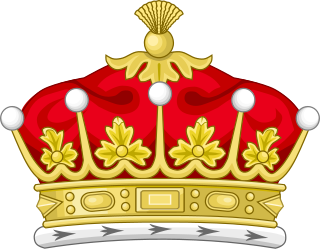
Earl De La Warr is a title in the Peerage of Great Britain. It was created in 1761 for John West, 7th Baron De La Warr. The Earl holds the subsidiary titles of Viscount Cantelupe (1761) in the Peerage of Great Britain, Baron De La Warr (1572) in the Peerage of England, and Baron Buckhurst, of Buckhurst in the County of Sussex (1864) in the Peerage of the United Kingdom. The barony De La Warr is of the second creation; however, it bears the precedence of the first creation, 1299, and has done so since shortly after the death of William West, 1st Baron De La Warr. The family seat is Buckhurst Park, near Withyham, Sussex.
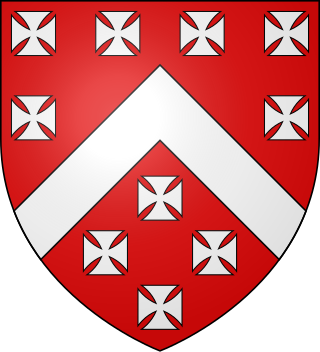
William de Berkeley, 1st Marquess of Berkeley was an English peer, given the epithet "The Waste-All" by the family biographer and steward John Smyth of Nibley. He was buried at "St. Augustine's Friars, London" according to one source, but most likely in the Berkeley family foundation of St Augustine's Abbey, Bristol.

Sir Samuel Argall was an English sea captain, navigator, and Deputy-Governour of Virginia, an English colony.

The Honourable George Percy was an English explorer, author, and early Colonial Governor of Virginia.

Sir Thomas Dale was an English soldier and colonial administrator who served as deputy-governor of the Colony of Virginia in 1611 and again from 1614 to 1616. Dale is best remembered for the energy and the extreme rigour of his administration in Virginia, which established order and in various ways seems to have benefited the colony, although he was criticised for high-handedness. He is also credited with the establishment of Bermuda Hundred, Bermuda Cittie, and the Cittie of Henricus.
William West, 1st Baron De La Warr of the second creation was the elder son of Sir George West (d.1538), second son of Thomas West, 8th Baron De La Warr, by his third wife, Eleanor Copley, and Elizabeth Morton, widow of Robert Walden, and daughter of Sir Robert Morton of Lechlade, Gloucestershire. He was a nephew and adopted heir of his uncle of the half blood, Thomas West, 9th Baron De La Warr, eldest son of the 8th Baron's second wife, Elizabeth Mortimer.

Reginald West, 6th Baron De La Warr and 3rd Baron West was an English nobleman and politician.

Thomas West, 1st Baron West was an English nobleman and member of parliament.

Richard West, 7th Baron De La Warr and 4th Baron West was the son of Reginald West, 6th Baron De La Warr, by his first wife, Margaret Thorley, daughter of Robert Thorley, esquire, of Tybesta, Cornwall, and his first wife, Anne de la Pole, widow of Sir Gerard de Lisle, and daughter of Michael de la Pole, 1st Earl of Suffolk.
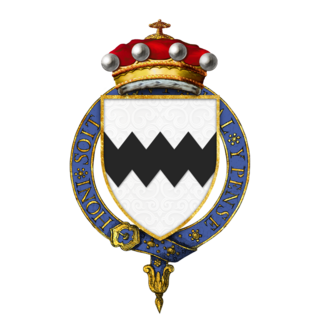
Thomas West, 8th Baron De La Warr and 5th Baron West, KB, KG was an English courtier and military commander during the reigns of Henry VII and Henry VIII.

Thomas West, 9th Baron De La Warr and 6th Baron West, KG was the eldest son of Thomas West, 8th Baron De La Warr, by his second wife, Elizabeth Mortimer, daughter of Sir Hugh Mortimer of Martley and Kyre Wyard, Worcestershire, by Eleanor Cornwall, daughter of Sir Edmund Cornwall.
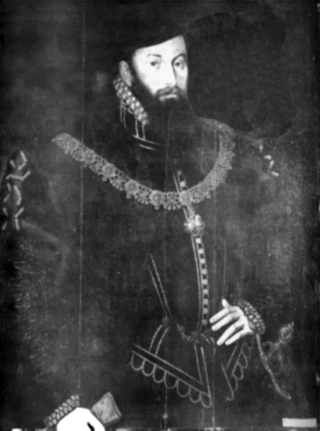
Thomas West, 2nd and 11th Baron De La Warr of Wherwell Abbey, Hampshire, was a member of Elizabeth I's Privy Council.
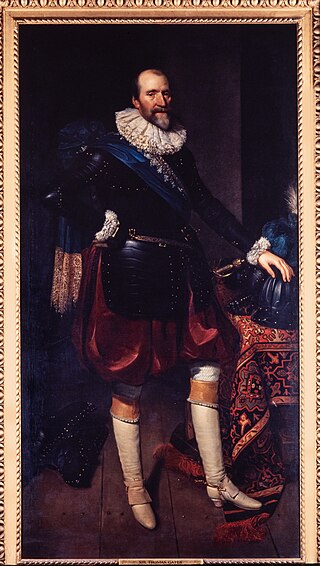
Sir Thomas Gates was the governor of Jamestown in the English Colony of Virginia. His predecessor, George Percy, through inept leadership, was responsible for the lives lost during the period called the Starving Time. The English-born Gates arrived to find a few surviving starving colonists commanded by Percy, and assumed command. Gates ruled with deputy governor Sir Thomas Dale. Their controlled, strict methods helped the early colonies survive. Sir Thomas was knighted in 1596 by Robert Devereux, 2nd Earl of Essex for gallantry at the Capture of Cadiz. His knighthood was later royally confirmed by Queen Elizabeth I.
Francis West was a Deputy Governor of the Colony and Dominion of Virginia.
John West was an early member of the Virginia General Assembly and acting colonial Governor of Virginia from 1635 to 1637, the third West brother to serve as Governor and one of the founders of the West Family of Virginia, which would include many politicians.

Lawes Divine, Morall, and Martiall, colloquially known as Dale's Code, is a governing document enacted in 1610 by the Deputy Governor of Virginia Thomas Dale. The code, among other things, created a rather authoritarian system of government for the Colony of Virginia. It established a "single ruling group" that "held tight control of the colony." The word "martial", contained in Dale's Code, refers to the duties of soldiers, while the terms "divine" and "morall" relate to crime and punishment. The code prescribed capital punishment for any colonist who endangered the life of the colony by theft or other crimes.
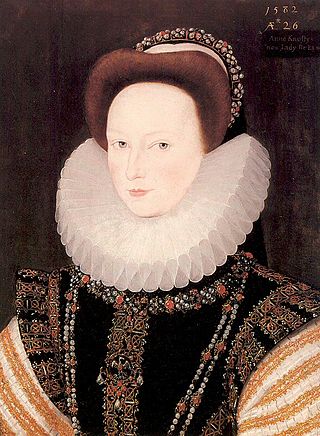
Anne West, Lady De La Warr was a lady at the court of Queen Elizabeth I of England.
Anthony Earbury was a minister in late Elizabethan and early Stuart England, who represented puritan interests while remaining within the Anglican ministry. He is notable for his involvement in the puritan group at the Hampton Court Conference and his confrontation with Archbishop Richard Bancroft soon afterwards, and in later life for his resistance to a challenge to his ministry brought on personal grounds by Sir Edward Powell, Master of Requests. Associated with various groups and patrons interested in the emigrant puritan ministry in America, he was prebendary of Wherwell in Hampshire, under the patronage of the Barons De La Warr, and vicar of Westonzoyland, Somerset for most of his career, and is thought to have been a chaplain to George Villiers, 1st Duke of Buckingham.
This is a timeline of events related to the settlement of Jamestown, in what today is the U.S. state of Virginia. Dates use the Old Style calendar.

















